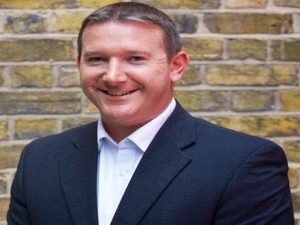
The latest Lancet Healthcare Access and Quality Index recently confirmed that South Africa's healthcare ranks poorly, at 119 out of 195 countries in the world. With the misappropriation of funds, unaffordable medical aid rates and the generally abhorrent state of government hospitals (with some exceptions), it seems real transformation is required to save costs, increase efficiencies and improve patient care.
"This sector requires true technological transformation," confirms Jane Thomson, Managing Director at South Africa Qlik Master Reseller. "The healthcare field has spent two decades digitising medical records, while data sources continue to grow exponentially. Powerful analytics are required to make sense of these massive data sets, coming in from fitness trackers, patient records, health monitors and more."
At Qlik's Analytic Solutions for the Healthcare Industry event, held in August at The Capital, Menlyn Maine, Pretoria, the possibilities of a digital healthcare world were discussed, illuminating the potential to improve decision-making and transform patient care. As keynote speaker at the event, David Bolton, Qlik's Global Industry Director: Health and Public Sector, shared how to transform global healthcare by engaging clinicians with visual analytics.
The global healthcare industry has undergone tremendous change, with hospitals around the world now using electronic patient record systems, as well as clinical, financial and operational systems, all driving data to management. It is the combination and analysis of this data that is essential in order to see the whole story across all of the available information. "This is the biggest challenge that we've had to address in the last 20 years; how do we connect all that data together?" asks Bolton.

Ironically, while effective data management and reliable visual analytics can assist in effecting real behavioural change, the biggest challenge in implementing these systems is the existing culture. "We often think technology is the real obstacle to enabling change in the healthcare industry when, actually, the biggest challenge is people," adds Bolton. "We see data analytics and the ability to see the whole story - to connect everything together, to associate those systems - and make sense of it all for clinicians and practitioners as the key enablers for change, both behavioural and in terms of life and death for the patient."
When faced with the daily mountain of data generated by a healthcare facility, the question becomes how to get insights that will really make a difference. In Australia, for example, inefficient rostering led to a gap in care, which caused elderly patients to fall, extending their length of stay, costing more, and having a very negative impact on the care provided. "By looking at the data in a different way and connecting the staff rostering with the patient experience, we were able to understand what was causing that problem," states Bolton. "This is a great example of how big data can really answer what could be a small question, but in a way that is meaningful to everyone."
With hidden insights abounding in healthcare data, Bolton believes uncovering the unnecessary variation in clinical practices should be a key focus area. Gauging clinicians, determining where the data has shown a difference and the impact it's had, and then changing the behaviour leads to innumerable improvements, both for the hospital and for the patient. Data creates better patient care, but it also has a huge bearing on the hospital's ability to deliver operational efficiency, within the budgets available. "By combining data with predictive analytics, we're driving real change in healthcare that's impacting both the patient and the hospital."

The data is available, but clinical engagement is essential to create a more efficient healthcare system, through visual analytics. It is important to position the data in a way that people can understand, but unless there's clinical engagement that can really drive the behavioural change, then a lot of that work can be for nothing.
Bolton concludes there are three key areas where clinical engagement happens. Firstly, the data must be trustworthy. The second requirement is to put the data in the right place. "Clinicians are busy people, they're not paid to be data analysts, so insights must be provided in a way that is easily accessible." Lastly, the technology must enable the clinician to ask questions in the right way, in a manner that makes sense to them. "This is critical because it facilitates real engagement which drives behavioural change, improves outcomes and uncovers opportunities throughout the organisation."
Share